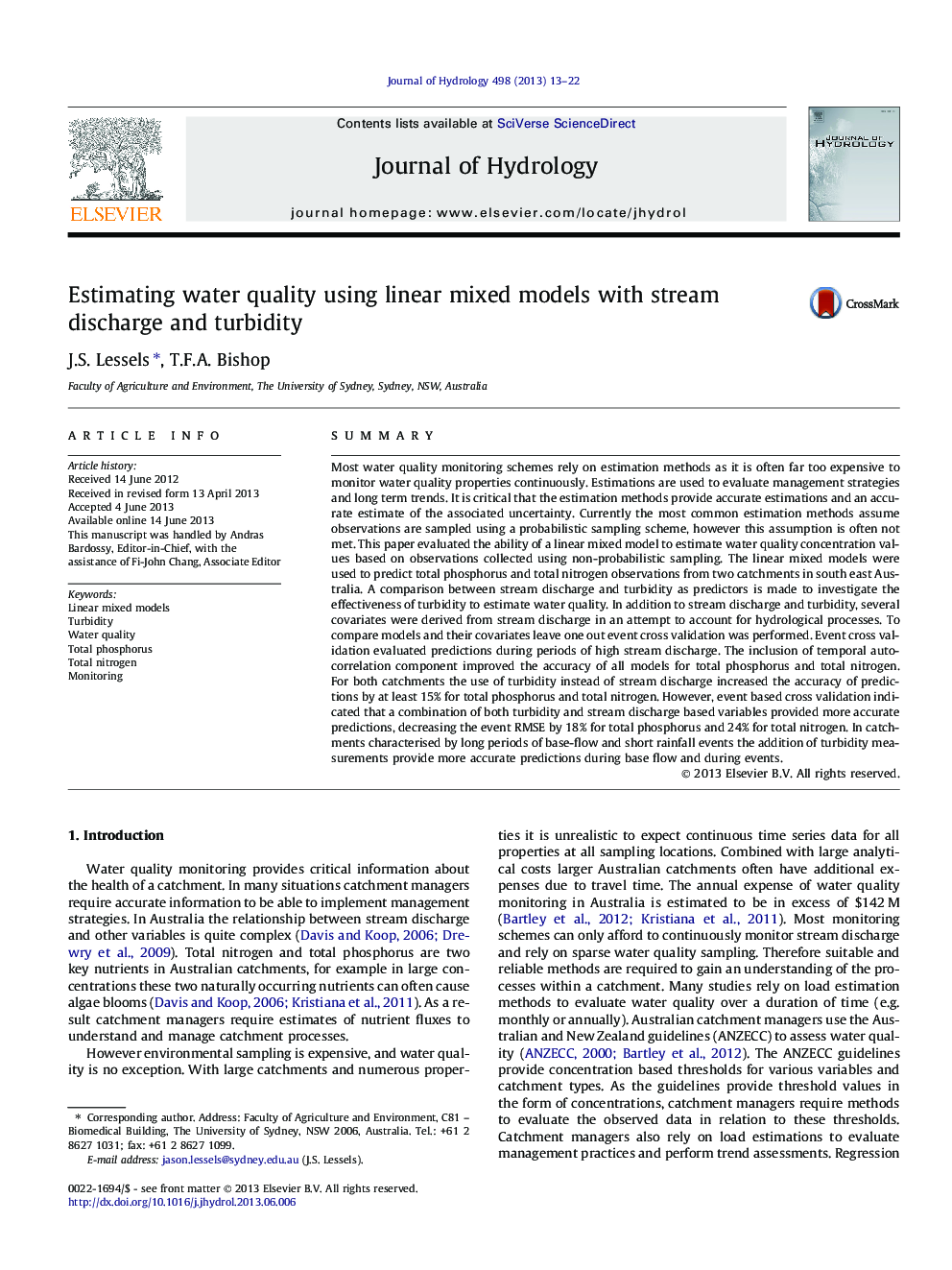| Article ID | Journal | Published Year | Pages | File Type |
|---|---|---|---|---|
| 6413552 | Journal of Hydrology | 2013 | 10 Pages |
â¢Most WQ monitoring schemes are based on non-probabilistic sampling.â¢We used LMMs to fit statistically valid models to predict WQ concentrations.â¢We compared turbidity and stream discharge-related variables.â¢Turbidity was superior to stream discharge-related variables.â¢Model performance must be evaluated in terms of predicting event concentrations.
SummaryMost water quality monitoring schemes rely on estimation methods as it is often far too expensive to monitor water quality properties continuously. Estimations are used to evaluate management strategies and long term trends. It is critical that the estimation methods provide accurate estimations and an accurate estimate of the associated uncertainty. Currently the most common estimation methods assume observations are sampled using a probabilistic sampling scheme, however this assumption is often not met. This paper evaluated the ability of a linear mixed model to estimate water quality concentration values based on observations collected using non-probabilistic sampling. The linear mixed models were used to predict total phosphorus and total nitrogen observations from two catchments in south east Australia. A comparison between stream discharge and turbidity as predictors is made to investigate the effectiveness of turbidity to estimate water quality. In addition to stream discharge and turbidity, several covariates were derived from stream discharge in an attempt to account for hydrological processes. To compare models and their covariates leave one out event cross validation was performed. Event cross validation evaluated predictions during periods of high stream discharge. The inclusion of temporal auto-correlation component improved the accuracy of all models for total phosphorus and total nitrogen. For both catchments the use of turbidity instead of stream discharge increased the accuracy of predictions by at least 15% for total phosphorus and total nitrogen. However, event based cross validation indicated that a combination of both turbidity and stream discharge based variables provided more accurate predictions, decreasing the event RMSE by 18% for total phosphorus and 24% for total nitrogen. In catchments characterised by long periods of base-flow and short rainfall events the addition of turbidity measurements provide more accurate predictions during base flow and during events.
